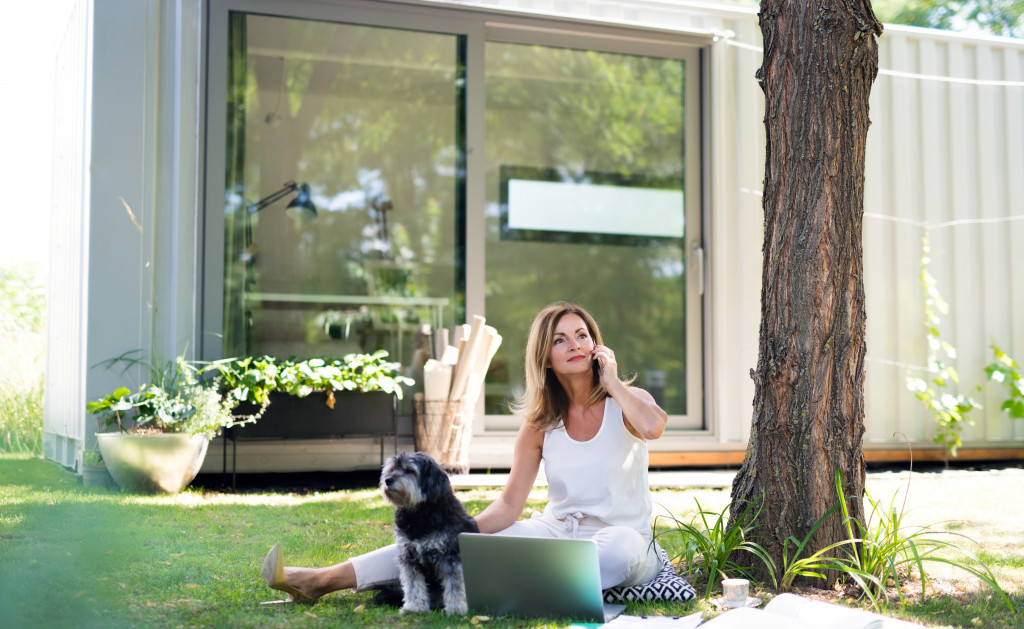- Secure outdoor spaces for pets by installing fences, lockable gates, and optional surveillance systems.
- Ensure plant and tree safety by choosing non-toxic plants and maintaining trees properly.
- Add a storage area to keep potentially hazardous gardening tools and chemicals away from pets.
- Thorough assessment and planning are vital when creating a pet-friendly backyard.
Pets naturally tend to outdoor environments like backyards, particularly dogs and cats. The freedom and stimuli provided by open, outdoor spaces can significantly enhance their physical and mental well-being. According to a study published in the Journal of Veterinary Behavior, dogs with access to backyards spend an average of 80% more time engaged in physical activity than their counterparts without access. Similarly, a survey conducted by the American Pet Products Association revealed that 70% of cat owners reported their feline companions showing noticeably happier behaviors after spending time outdoors. These statistics underline a backyard area’s positive impact on a pet’s quality of life.
Unfortunately, your backyard might not be the perfect paradise you think it is for your pets. Many standard backyard features are dangerous or unhealthy for animals. As a result, you might have to make a few changes to ensure your furry companion’s safety and happiness in the outdoor area. Here are some ideas to consider when designing an outdoor space for your pets:
Security Features
Security is paramount in creating a pet-friendly outdoor environment. An unsecured backyard can expose your pets to various risks, including escaping and getting lost, invading other people’s properties, or encountering wild animals. Therefore, installing appropriate security features ensures your pets can play and explore safely.
- Fencing: A sturdy fence is an essential element of a secure backyard. Ensure the fence is tall enough to prevent your pets, especially dogs, from jumping over it. Also, it should reach a few inches below the ground to stop digging animals from getting out or other animals from getting in.
- Lockable gates: Pets are curious creatures and may find a way to open a simple latch on a gate. Therefore, consider installing a lock or a complex latch your pets can’t operate.
- Outdoor surveillance: While not necessary, outdoor surveillance cameras can provide an extra layer of security. They allow you to monitor your pets and ensure they’re safe even when you’re not physically in the backyard.
By incorporating these security measures, you can create a safe and enjoyable outdoor area for your pets to frolic and play, giving you peace of mind knowing they’re safe.
Plant and Tree Safety

While nature can be enormously beneficial for pets, certain plants and trees can pose a significant threat. Many common garden plants and trees are toxic to animals if ingested, leading to severe health issues or even death. Furthermore, large trees may have weak branches that could break and injure your pet or create a way for them to escape. Thus, ensuring plant and tree safety is crucial in designing a pet-friendly backyard. Here are some ways to make it so:
Pet-Friendly Plant Selection
It’s vital to select plants that are non-toxic to animals. Many online resources, such as the ASPCA’s toxic and non-toxic plants list, can help you choose suitable plants for your garden.
Proper Tree Maintenance
Regular pruning of trees can help remove weak or potentially hazardous branches. Professional tree removal services should be employed for extensive pruning or tree removal to ensure the job is done safely and correctly.
Secure Tree Trunks
Large trees with low branches can provide a launchpad for adventurous pets to scale fences or walls. To discourage climbing, secure the lower parts of the tree trunks with wire mesh or similar material that pets can’t climb.
Use of Protective Barriers
Protective barriers around plants can prevent pets from accessing them. Consider installing decorative fencing or plant cages to safeguard your pets while maintaining the aesthetic value of your garden.
Storage Area Addition

A storage area for gardening tools and other potentially hazardous objects is crucial to a pet-friendly backyard. Like young children, pets are driven by curiosity and can quickly get into trouble when left unsupervised around things that threaten their safety.
Gardening tools such as rakes, shovels, or shears can inflict severe injuries if your pets were to step on or play with them. Hazardous chemicals such as pesticides, fertilizers, and certain types of mulch can cause poisoning if ingested. By having a dedicated, pet-proof storage area for these items, you can ensure they are safely stowed away when not in use, protecting your pets from unnecessary harm.
Furthermore, a clean, clutter-free yard is safer and makes for your pets a more enjoyable play and exploration space. Your furry friends will appreciate having a designated storage area as much as you will.
Final Thoughts
In conclusion, designing a pet-friendly outdoor area requires careful consideration and planning. By incorporating appropriate safety measures, selecting pet-friendly plants, and providing a storage area for potentially hazardous objects, you can create a safe and enjoyable environment for your pets to thrive in. Remember that every backyard is different, so assess your space carefully and make necessary adjustments to ensure your pets are safe.

